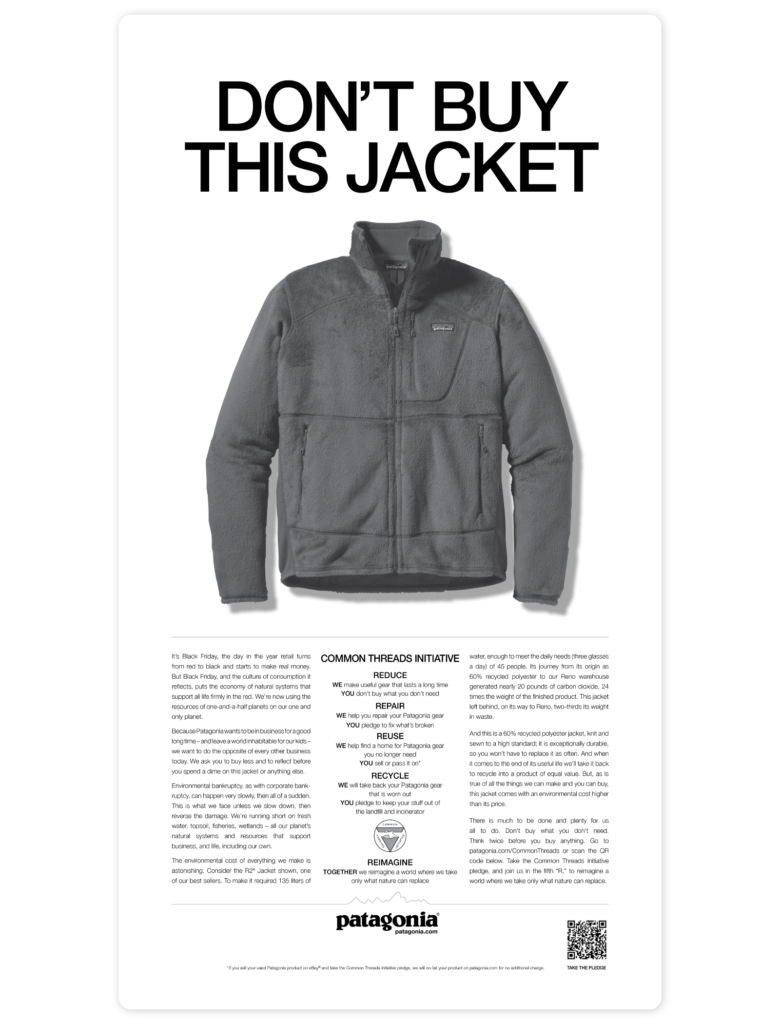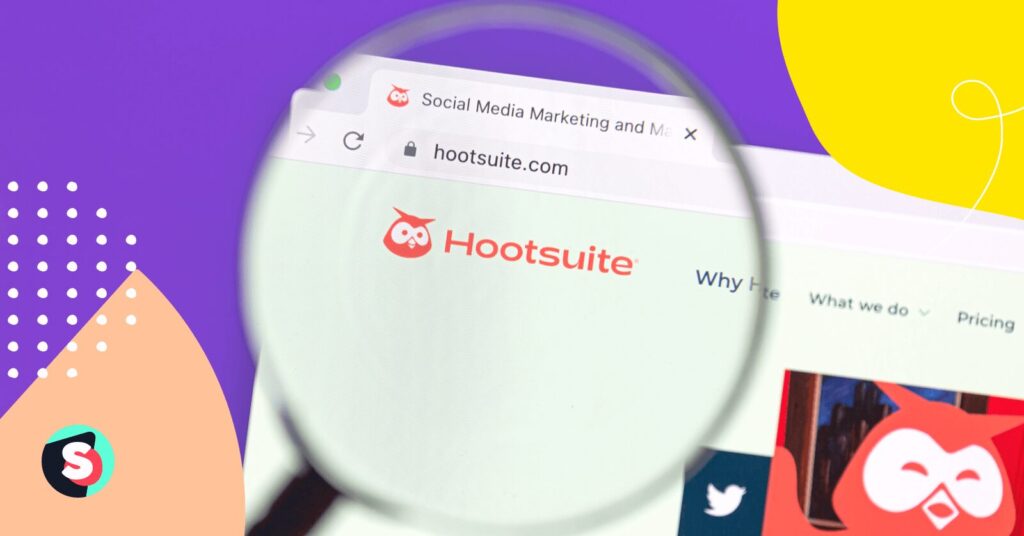Summarize this article via
A recent Twitter #RealTalk report revealed that 80% of consumers agree they don’t mind being sold products on social media, provided it’s “fun, useful, entertaining, informative, or moves me in some way”.
So what does this tell us?
Well, the message is that modern buyers want to connect with brands. To do this, they need to trust that the brand is genuine and shares their core values. And for businesses that can tick these boxes, higher sales, deeper consumer connections, and increased customer loyalty are just around the corner.
If you’re ready to build brand authenticity and forge meaningful customer relations, then keep reading. We cover everything you need to know, including:
What is brand authenticity?
Brand authenticity is a term used to describe a business that consumers believe is genuine about its values, identity, products, and purpose. It involves building a sincere image that aligns with the brand’s core values and resonates with the target audience.
In an age of cancel culture, an increasing number of consumers highly value brand authenticity. As such, they are more likely to hold brands accountable, ensuring they “walk the walk” and live up to their promises.
As the saying goes, “Honesty is the best policy”. This rings true now more than ever, meaning brands must uphold a standard of integrity, especially online.
Now that we’ve covered a brand authenticity definition, it’s time to look at what characteristics make your brand authentic (or not).
What makes a brand authentic?
Authenticity, transparency, credibility… these words matter for your brand image. When you position your brand as an authentic one, you can build trust and deeper relationships with your target audience.
But what makes a brand authentic?
We have rounded up the key elements of brand authenticity below.
Elements of brand authenticity
- Adaptability: Times change. So, authentic brands need to learn how to adapt to new situations while staying true to their core values.
- Communication: An open, honest communication strategy helps brands form real human connections. This includes addressing mistakes and never giving inaccurate or misleading information.
- Connection: Authentic brands offer their audience a glimpse into the real lives of the business. This could be through sharing stories from employees, founders, and customers.
- Consistency: Authenticity means delivering on your promises all the time, whether that’s the quality of your products, customer care, or brand messaging.
- Customer-centric: Brands that want to resonate with their audiences need to truly care about their customers’ needs and experiences. In short, they prioritize long-term relationships over short-term wins.
- Originality: Copying and pasting from other brands is a major red flag. Authenticity means forging a strong and unique identity.
- Transparency: Brands that are open about everything from sourcing materials to production processes to business practices spark trust and loyalty.
- Value-led: A major cornerstone of brand authenticity is having clear values to guide your brand’s actions, decisions, and messaging.
Importance of brand authenticity on social media
Research by Marketing Charts shows that authenticity is the most important element for consumers when learning about a brand or product on social media.
Indeed, big brands are even shifting away from powerhouse influencers in favor of more relatable nano and micro-influencers. Why? Because trust is the new currency of choice. Consumers are swapping celebrity endorsements and expert influencers for the word of someone more like them.
All of this means that authenticity in marketing is more important than ever.
Now let’s translate that into tangible results.
Authentic brands enjoy higher rates of customer engagement, retention, and participation. This leads to better business results, lower churn rates, and enhanced social proofing.
What’s more, fostering deeper connections with your audience positions your brand to gain deeper market insights and handle crises better.
Now that we know the importance of brand authenticity, it’s time to explore how to build it in ten simple steps.
How to build brand authenticity: 10 steps to start
There’s no doubt about the business benefits of authentic branding. The big question is how do you build brand authenticity? We’ve created a step-by-step guide to help you on your way.
Step 1: Define your core values
What do all authentic brands have in common? They all have clear values and a purpose.
That is the first step in becoming an authentic brand. Start by identifying the core values that will guide your actions, decisions, products, and customer interactions going forward. As a general rule, these core values should be simple, clear, and tangible.
To give you an idea, here are Apple’s five core values:
- One person, one computer.
- We are going for it and we will set aggressive goals.
- We are all on the adventure together.
- We build products we believe in.
- We are here to make a positive difference in society, as well as make a profit.
Next, you need to establish a clear purpose. This should go beyond profit, outlining how you plan to positively impact society, the environment, or your customers.
Don’t rush this step. After all, these core values will inform almost every decision you make going forward.
Step 2: Get to know your audience
Authentic brands really know who their customer is. So, the next step is to conduct through customer research. During your research, you should gain a deep understanding of who your target audience is as well as their needs, preferences, behaviors, and pain points.
Once you’ve collected this information, you should develop comprehensive customer personas. These will enable you to build content and messaging that truly resonate with your target audience. As a result, you can offer more genuine, personal experiences.
Step 3: Be unique
It’s a jungle out there. That makes it tricky to stand out from your competitors. One of the best ways to remedy this is to develop a unique and memorable brand identity. Who are you? What do you stand for? How do you speak? What is your brand personality?
Take the answers to these questions and create a consistent visual identity. This means coming up with a distinctive logo, color story, typography, and design.
Don’t forget to define a brand tone of voice too. This should align with your values and personality and resonate with your target audience.
Documenting all of this in a detailed style guide ensures that every area of your company is in line with your unique brand identity.
Step 4: Be consistent
Delivering consistent messaging is a key pillar in becoming an authentic, trustworthy brand. Therefore, you need to develop a communication/messaging strategy to showcase your brand values and purpose cohesively. The goal is to provide a consistent message across all touchpoints.
Having a stellar content plan can help you achieve this. Your content should tell your brand story through sharing employee and customer experiences. Remember, while all your content should have a cohesive style and voice, don’t be afraid to experiment with different formats and mediums.
Step 5: Transparency matters
Honesty remains the best policy, meaning your content and communication strategy should reflect this.
Let’s start with communication. Authenticity means being clear and open when communicating with audiences. That means addressing mistakes, changes, challenges, and wins openly. There’s no room for misleading messaging or omitting information when trying to build brand authenticity.
In terms of content, behind-the-scenes content that gives a sneak peak of your business operations, processes, and day-to-day activities works great. By giving your customers a real look at how your business works and your employee experience, you build trust.
User-generated content (UGC) is another effective way to build brand authenticity. Simply encourage customers to share their honest experiences with your brand by leaving reviews, testimonials, or social media posts.
In short, giving your customers a “warts and all” view of your business lets them form a deeper connection with your brand.
Step 6: Invest in customer relationships
Forging meaningful relationships with your customers is a surefire way to build trust, and long-lasting brand advocates. And this is easier than ever thanks to social media.
The next step in becoming an authentic brand is to develop deep connections with existing and potential customers.
You can do this by engaging with your customers on social media. For example, ensure that you respond to customer comments, messages, inquiries, and complaints in a timely manner.
In addition, take the time to join community conversations and interact with your target audience on social media. This could be by starting dialogues that align with your brand values or jumping on viral trends that resonate with your customers.
To take this a step further, consider personalizing your interactions. Use the customer research from step two to tailor your offers based on unique customer preferences, behaviors, and needs. The more personalized your approach, the easier it will be to connect with consumers in a real way.
Step 7: Get feedback
The best way to gauge how your customers perceive your brand is by collecting and analyzing their feedback.
This feedback allows you to understand where your brand is doing well and where further work is needed. Of course, gathering feedback is just half the battle. You must then act on it by making tweaks to your customer experience and/or products.
Using a comprehensive social media management tool can streamline this process and help you turn brand mentions into insights. For instance, with Sociality.io you can manage brand health, benchmark your competitors, and engage with your followers at scale.
All of this makes it easy to collect feedback and act on it promptly.
Step 8: Engage in social responsibility initiatives
Remember those brand values from step one? Well it’s time to put your money where your mouth is. If you really want to showcase your genuine commitment to your values, you may want to engage in social initiatives that align with them.
Forming authentic partnerships with organizations that support the causes your brand holds dear is a great first step. Let’s say your brand champions diversity. Collaborating with like-minded charities can help you to really make a difference and position your brand as a thought leader in this area.
The goal is to forge long-lasting and sincere partnerships, so don’t jump the gun. This type of relationship must be nurtered.
Step 9: Adapt
Change is the only constant in the world of business. So, center your brand around being flexible and adaptable.
As trends change and language evolves, your brand must continue to monitor industry trends and customer preferences so you can adjust your offerings accordingly. Perhaps your customers now prefer communicating via social media or your marketing strategy is no longer working. Be ready to pivot when needed.
Evolution is the best way to ensure survival, but remember to stay true to your core brand values.
Step 10: Play the long game
Trust can’t be built overnight. Therefore, your brand will need to make an ongoing commitment even if you don’t see results right away. Stick with it, sooner or later your hard work and consistency will pay off.
An important caveat – Authenticity is not something that can be conjured up in a boardroom. It comes from genuine intentions, actions, and interactions. Therefore, your brand will need to consistently prioritize its values, audience, and integrity while adapting to ever-changing circumstances.
While this balancing act is no easy feat, the long-term results are worth it. Let’s take a look at some real-life examples of authentic brands that are playing the long game.
4 Best brand authenticity examples
These brand authenticity examples demonstrate how modern businesses can cultivate a genuine image that resonates with audiences, sends a clear message, and stands the test of time.
Here are four success stories to inspire you.
1. Dove
Let’s rewind back to 2004 when Dove launched its Real Beauty campaign (now called the Dove Self-Esteem project). This was a pivotal moment for the beauty brand, transforming it from a simple soap company to a pioneer for women’s empowerment.
The first step in this transformation was to release a new mission statement: “beauty should be a source of confidence and not anxiety”. And since then, the brand hasn’t wavered from this statement, with every marketing campaign aligning perfectly with the message.
Over the years, Dove has become synonymous with diversity, natural beauty, and empowerment. By opening up dialiogues about beauty standards and championing “real beauty”, it has become one of the most trusted brands out there.
Perhaps one of the brand’s most impactful campaigns was the 2013 Real Beauty Sketches campaign. The idea behind it was to help women cultivate a more positive relationship with their appearance. Women describe themselves to a sketch artist who draws them based solely off their description. Then, a stranger describes the same woman to the sketch artist and both sketches are compared. The message is poignant: women are their own worst critics and don’t see their own beauty.
Not only do these ads create an emotional connection, but they share a consistent point of view. As a brand, Dove continues to support organizations that align with its values and messaging.
2. Patagonia
Nobody represents brand authenticity more than Patagonia. The company has a clear mission statement, and it never wavers from it.
Patagonia is committed to quality, integrity, environmentalism, and justice. These values inform the company culture, product design, manufacturing process, and marketing messaging.
From investing in renewable energy with its ‘Drive-Less’ employee program to developing the Chemical and Environmental Impacts Program to minimise the environmental impact of its global supply chain, Patagonia puts its money where its mouth is.
Other initiatives, such as donating 1% of sales to grassroots environmental groups and promoting fair labor practices at every stage of the supply chain, show Patagonia consistently stays true to its mission.
Patagonia is dedicated to building durable products that cause the least possible environmental harm. Its Worn Wear program actively encourages customers to buy and sell used Patagonia clothing and educates consumers on how to make their garments last as long as possible.
The brand took it one step further in 2011 with its full-page “Don’t Buy This Jacket” Black Friday ad. The ad prompts readers to truly consider the environmental impact of consumerism.
Interestingly, the following year saw the company’s revenue grow by around 30%. Why? Because it proved itself as an authentic brand with a genuine message.
Patagonia remains a pioneering brand that consumers trust.
3. Lush Cosmetics
Remember when we talked about total transparency? Well, let’s circle back.
Being completely open and honest about your business practices and manufacturing process is one of the best ways to showcase authenticity. Unfortunately, while many businesses talk about how their products are made, very few are willing to openly unveil the full process.
Lush Cosmetics is an exception. Since 2014, the natural beauty brand has been sharing videos demonstrating how its products are made. These “How It’s Made” videos feature employees explaining each step of the manufacturing process.
By choosing to feature real employees instead of communications experts or actors, Lush is able to build a strong sense of accessibility and authenticity. As a result, the content resonates with the brand’s audience and perfectly represents its values.
Of course, only brands with nothing to hide can curate transparent content of this nature.
Honorable mention – Starbucks
Starbucks may not be the first brand that comes to mind when you think of authenticity. For many, the chain coffee shop has become synonymous with all that’s wrong with modern consumerism, signing the death warrant on countless independent coffee places worldwide.
However, in recent years, Starbucks has put the spotlight on values over products. Take its 2020 UK campaign #what’syourname.
Using storytelling to highlight the brand’s values, the ad tells the story of a trans man who is still being called by his old name. From his doctor to his parents to his postman, the trans protagonist is struggling to be seen for who he is.
In the ad, Starbucks is the only place where the young man is asked (and addressed) by his chosen first name. The ad is a powerful message about the brand’s commitment to diversity and paints a humanistic picture of the business.
Starbucks partnered with the non-profit organization Mermaids to produce the video, as well as donating to the organization and actively featuring trans people in its video content. In doing so, Starbucks has shown an authentic commitment to inclusivity and trans visibility.
So, what are the biggest lessons to learn from these authenticity examples? We’ve rounded them up below.
- Consistently align your marketing efforts with your mission statement
- Build a real, emotional connection with your audience
- Put your money where your mouth is and take bold action (like Patagonia’s iconic ‘Don’t buy this jacket’ campaign)
- Take the customer on the manufacturing journey
- Focus on values over products
In closing…
Brand authenticity is more than a buzz word or boardroom jargon. It’s the key to longevity in an increasingly more competitive landscape. Brands that prove themselves to be authentic reap long-term rewards in the form of increased revenue, enhanced customer retention rates, improved word-of-mouth marketing, and deeper connections.
However, authenticity is not something that can be manufactured in a boardroom. The only real way to become an authentic brand is to be, well, real. Real in terms of your values, mission, action, and beliefs. Authenticity means consistently “walking the walk” and putting your customers at the heart of everything you do. It also means carving out a unique identity and aligning all your marketing efforts with this.
Using a social media listening tool like Sociality.io can help your brand get to know your audience, listen to feedback, and implement a customer-centric approach. Grab your free trial today.





